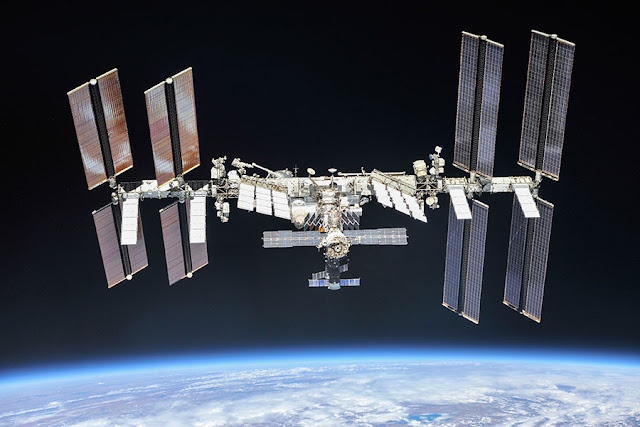mardi 30 avril 2019
Space Research Continues on Station as NASA, SpaceX Move Off May 1 Launch
ISS - Expedition 59 Mission patch.
April 30, 2019
NASA has requested SpaceX move off from May 1 for the launch of the company’s 17th commercial resupply mission to the International Space Station.
On April 29, the space station team identified an issue with one of the station’s Main Bus Switching Units that distributes power to two of the eight power channels on the station. There are no immediate concerns for the crew or the station. Teams are working on a plan to robotically replace the failed unit and restore full power to the station system. Additional information will be provided as it becomes available. The earliest possible launch opportunity is no earlier than Friday, May 3.
Image above: The Gulf of Mexico, Galveston Bay and Houston, Texas, the home of NASA’s Johnson Space Center, are pictured from the International Space Station 256 miles above the Lone Star State. Image Credit: NASA.
Meanwhile, the Expedition 59 crew explored a wide variety of microgravity science today including human research, robotics and space manufacturing techniques.
Flight Engineer David Saint-Jacques jotted down his impressions of space life in a private journal this morning for the Behavioral Core Measures study. Later he installed new incubator hardware inside the Space Automated Bioproduct Lab for the Kidney Cells experiment that seeks innovative treatments for humans on Earth and in space.
Image above: The International Space Station was pictured by an Expedition 56 crewmember aboard a departing Soyuz crew ship on Oct. 4, 2018. Image Credit: NASA.
Astrobee, a new free-flying robotic assistant, is being readied for testing today inside Japan’s Kibo lab module. NASA astronaut Anne McClain inspected and checked out the cube-shaped mini-robot’s components then activated the device to perform a flyaround. Astrobee could save the crew time performing routine maintenance duties and providing additional lab monitoring capabilities.
Engineers are also testing the feasibility of producing fiber optic cable in space. Microgravity reveals physical processes hidden by Earth’s gravity that may prove the superiority of space manufacturing. Flight Engineer Christina Koch contributed to that study today working on fiber samples in the Microgravity Science Glovebox that will be examined back on Earth for quality.
Related links:
Expedition 59: https://www.nasa.gov/mission_pages/station/expeditions/expedition59/index.html
SpaceX: http://www.nasa.gov/spacex
NASA: http://www.nasa.gov/
Behavioral Core Measures: https://www.nasa.gov/mission_pages/station/research/experiments/explorer/Investigation.html?#id=7537
Space Automated Bioproduct Lab: https://www.nasa.gov/mission_pages/station/research/experiments/explorer/Facility.html?#id=1148
Fiber optic cable in space: https://www.nasa.gov/mission_pages/station/research/experiments/explorer/Investigation.html?#id=7630
Microgravity Science Glovebox: https://www.nasa.gov/mission_pages/station/research/experiments/explorer/Facility.html?#id=341
Space Station Research and Technology: https://www.nasa.gov/mission_pages/station/research/index.html
International Space Station (ISS): https://www.nasa.gov/mission_pages/station/main/index.html
Images (mentioned), Text, Credits: NASA/Mark Garcia.
Best regards, Orbiter.ch



